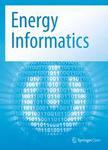版权所有:内蒙古大学图书馆 技术提供:维普资讯• 智图
内蒙古自治区呼和浩特市赛罕区大学西街235号 邮编: 010021

作者机构:Department Grid Planning and Grid Operation Fraunhofer IEE Kassel Germany Department of Energy Management and Power System Operation University of Kassel Kassel Germany Department of Electrical and Computer Engineering Ben-Gurion University of the Negev Beer Sheva Israel Department of Measurement and Control University of Kassel Kassel Germany Chair of Computer Networks and Computer Communications University of Passau Passau Germany
出 版 物:《Energy Informatics》 (Energy. Inform.)
年 卷 期:2019年第2卷第1期
页 面:1页
核心收录:
摘 要:Historically, the power distribution grid was a passive system with limited control capabilities. Due to its increasing digitalization, this paradigm has shifted: the passive architecture of the power system itself, which includes cables, lines, and transformers, is extended by a communication infrastructure to become an active distribution grid. This transformation to an active system results from control capabilities that combine the communication and the physical components of the grid. It aims at optimizing, securing, enhancing, or facilitating the power system operation. The combination of power system, communication, and control capabilities is also referred to as a smart grid. A multitude of different architectures exist to realize such integrated systems. They are often labeled with descriptive terms such as distributed, decentralized, local, or central. However, the actual meaning of these terms varies considerably within the research *** paper illustrates the conflicting uses of prominent classification terms for the description of smart grid architectures. One source of this inconsistency is that the development of such interconnected systems is not only in the hands of classic power engineering but requires input from neighboring research disciplines such as control theory and automation, information and telecommunication technology, and electronics. This impedes a clear classification of smart grid solutions. Furthermore, this paper proposes a set of well-defined operation architectures specialized for use in power systems. Based on these architectures, this paper defines clear classifiers for the assessment of smart grid solutions. This allows the structural classification and comparison between different smart grid solutions and promotes a mutual understanding between the research disciplines. This paper presents revised parts of Chapters 4.2 and 5.2 of the dissertation of Drayer (Resilient Operation of Distribution Grids with Dis